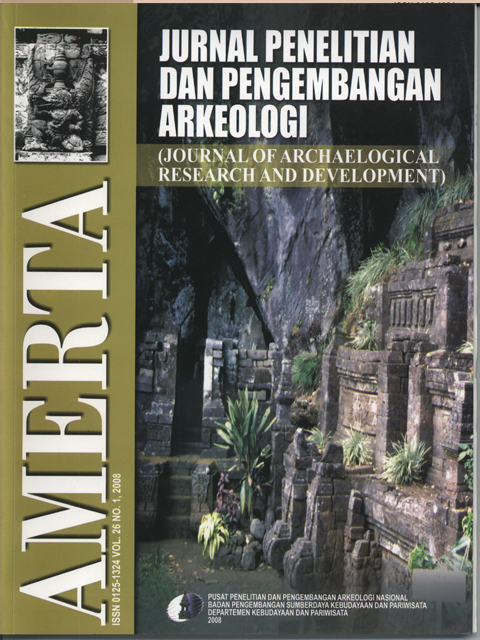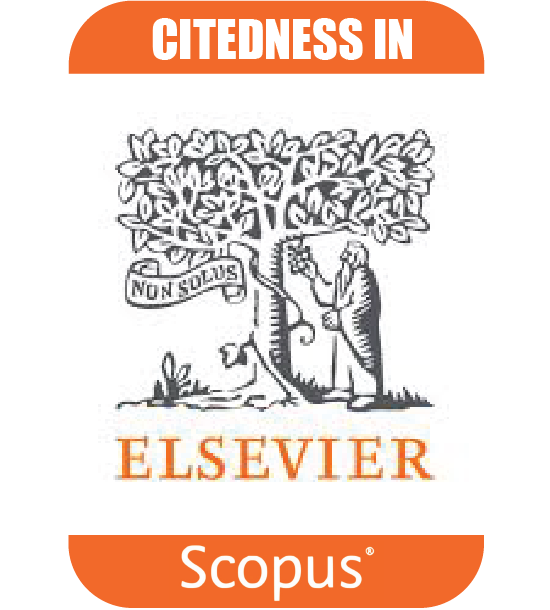KONDISI KEHIDUPAN KEAGAMAAN MASAMAJAPAHIT BERDASARKAN SUMBER TERTULIS DAN DATA ARKEOLOGI
Keywords:
Majapahit, unsur keyakinan, millenarisme, religiousnessAbstract
ABSTRAK. Keagamaan pada masa Majapahit yang paling menonjol adalah semaraknya pusat- pusat keagamaan dengan memuja tokoh tertentu yang dianggap menyelamatkan dunia. Keagamaan yang telah lebih berkembang pada masa Majapahit akhir seiring dengan memudarnya Hindu- Budha.
Para sarjana menyebut kondisi keagamaan pada masa Majapahit akhir sebagai milenarisme. Unsur kepercayaan yang secara sadar diangkat kembali ke permukaan oleh para resi untuk mengimbangi hadirnya inovasi Islam. Unsur kepercayaan dengan ciri kehidupan spiritual yang dilangsungkan di lingkungan-lingkungan sunyi dan terpencil semacam padepokan di pewayangan (?).
Fokus ajaran dengan menampilkan tokoh Bhima sebagai simbol utama ruwat dan kalepasan, karenanya upacara ruwatan pada masa ini menjadi sangat penting. Tokob Bima, di sini dihubungkan dengan "Pahlawan Keagamaan" berkenaan dengan unsur bersatunya kembali Kawula Gusti yaitu Suksma diri dan Maha Suksma. Selaras peristiwa yang dialami Bhima tatkala keluar dari dirinya dan memperoleh wejangan dari Dewaruci dan kembali kepada saudara-saudaranya.
Nampak bahwa kondisi keagamaan masa Majapahit akhir telah mempertegas hubungan konvensional dan kepercayaan lingkungan alam yang sesungguhnya menjadi dasar representasi mental yang pernah berlaku sejak awal dengan pokok pemujaan pada nenek moyang.
Katakunci: Majapahit, unsur keyakinan, millenarisme.
ABSTRACT. The Condition of Spiritual Life During The Majapahit Era Based on Written Sources and Archeological Data. The most profound spiritual life in Majapahit was evidenced by the omnipresence of religious centres where people worship certain figures, which were considered the saviors of the world when Hindu and Buddha teachings were fading away.
Scholars named the spirituals condition at the end of the Majapahid era "the symptom of millenarism". It was during this era that the indigenous belief or local religion was revived in anticipation of the coming of innovations of Islam. The tribute to this indigenous belief took place in remote and quiet places, which are isolated in the forests and confined within mountain ranges, similar to a certain kind of padepokan (residence of priests and hermits) in shadow puppet stories.
In this local cult, Bhima figure is addressed as the main symbol in the ritual of exorcism (ruwat) and redemption (kaleupasan). Therefore, currently ruwatan is one of the most very important elements of this local belief. Bhima figure is attributed as a "spiritual hero" because he passed through several stages before finding spiritual enlightenment an transformed himself from a worldly entity into an enlightened being. He has also experienced an ultimate union with god (Kawula Gusti, which is a union of Suksma or self onto Maha Suksma or god). This elements of belief is similar to that of Hindu Dewaruci epic.
It is evident, then, that in the spiritual life during the Majapahit era there was a harmony among all religions and local beliefs, which was the nucleus of Javanese mentality since the beginning of time when ancestor worship was practiced.
Keyword: Majapahit, religiousness, millenarisme.
Downloads
Published
How to Cite
Issue
Section
License
Copyright (c) 2008 Richadiana Kadarisman Kartakusuma

This work is licensed under a Creative Commons Attribution-ShareAlike 4.0 International License.








